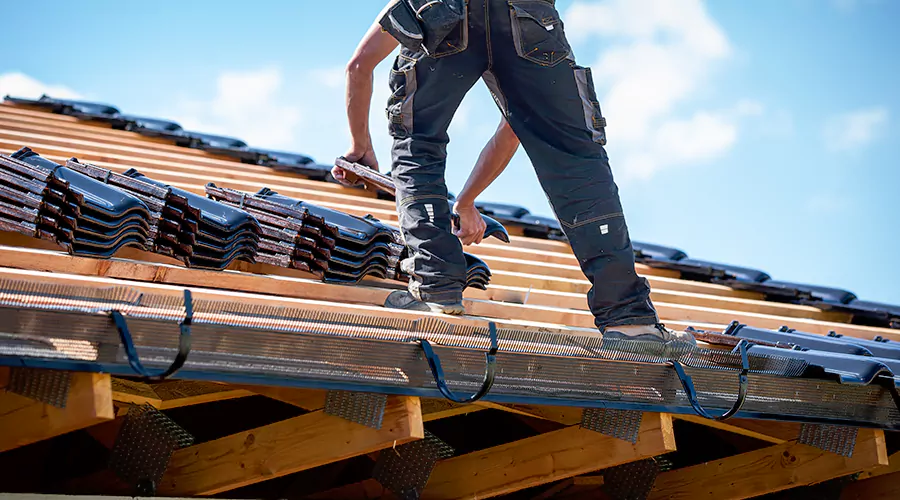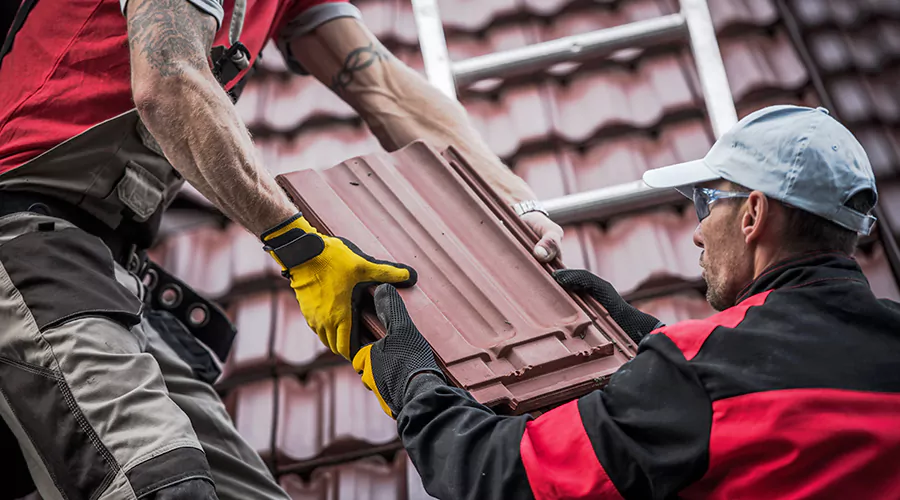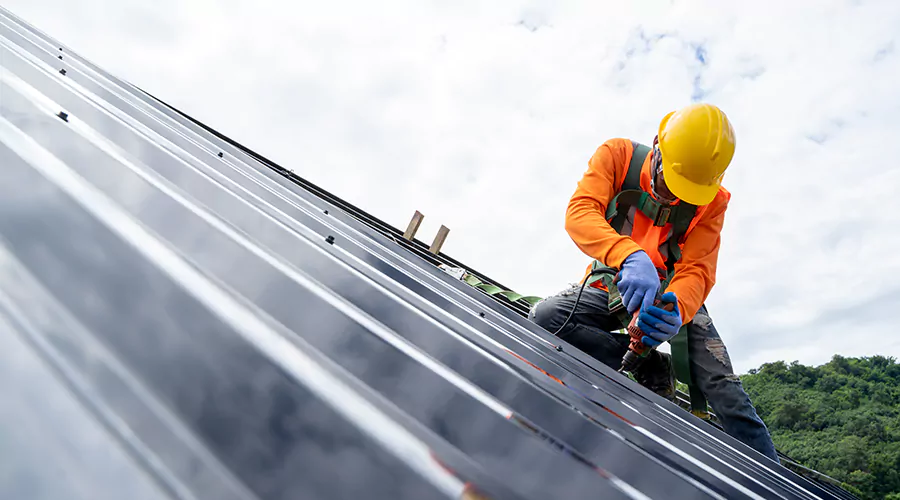A well-maintained roof is crucial for protecting your home from the elements and ensuring its longevity. While major roof repairs can be expensive, several affordable tips can help you keep your roof in top shape. In this blog post, we will explore cost-effective strategies to maintain and extend the life of your roof.
Regular Inspections
Regular roof inspections stand out as a cost-effective and essential strategy for maintaining the longevity and health of your roofing system. Conducting inspections at least twice a year enables early detection of potential issues such as loose shingles, damaged flashing, or emerging leaks. By identifying these concerns in their initial stages, homeowners can address them promptly, preventing minor problems from escalating into major, more expensive repairs. Beyond the economic benefits, consistent roof inspections contribute to prolonging the lifespan of your roof, protecting against water damage, and providing peace of mind.
Clean Gutters
Regularly cleaning your gutters emerges as a simple yet cost-effective strategy to maintain the health and functionality of your roof. Clogged gutters can lead to water accumulation on the roof, potentially causing damage over time. By removing leaves, twigs, and debris from your gutters consistently, you ensure that rainwater can flow freely, preventing overflow and subsequent water infiltration. This uncomplicated task not only guards against potential water damage to the roof but also protects the overall structural integrity of your home. Cleaning gutters is an affordable measure that, when done routinely, contributes significantly to the prevention of more severe and expensive issues, making it an essential part of any homeowner's roof maintenance routine.

Trim Overhanging Branches
Trimming overhanging branches is a budget-friendly yet impactful measure for maintaining the well-being of your roof. Over time, branches can deposit debris onto the roof, leading to issues like clogged gutters and potential damage to shingles. Furthermore, these branches can create a pathway for pests to access your home. By regularly trimming back overhanging branches, you not only prevent the accumulation of debris but also minimize the risk of unwanted critters finding their way into your attic. This straightforward and affordable task not only safeguards your roof from potential damage caused by falling limbs but also contributes to the overall cleanliness and longevity of your roofing system, making it a prudent investment in the protection of your home.
Remove Debris
Removing debris from your roof is a fundamental yet economical practice that plays a crucial role in preserving its structural integrity. Leaves, sticks, and other debris, when left unchecked, can accumulate and trap moisture, providing an ideal breeding ground for mold and mildew. Regularly using a broom or a leaf blower to clear your roof of these elements not only enhances its aesthetic appeal but also prevents potential water damage. The removal of debris is a preventative measure against the deterioration of shingles and the development of costly issues such as leaks and mold infestations.
Check and Seal Flashing
Flashing around chimneys, vents, and skylights is susceptible to wear and tear over time. Inspect the flashing for any signs of damage or deterioration, and seal any gaps with roofing cement. Properly sealed flashing is essential for preventing water leaks and maintaining the overall integrity of your roof. Checking and sealing flashing is a cost-effective and essential step in maintaining the integrity of your roof. Flashing around chimneys, vents, and skylights is prone to wear and tear over time, and addressing issues promptly can prevent water leaks and subsequent damage. Regular inspections to identify any gaps, cracks, or deterioration in the flashing can be coupled with sealing these areas using roofing cement. This straightforward task acts as a proactive barrier against water infiltration, preserving not only the flashing itself but also the overall structural soundness of your roof.
Invest in Moss and Algae Prevention
In humid climates, moss and algae growth can be a common issue on roofs. To prevent these organisms from taking hold, consider installing zinc or copper strips along the ridge of your roof. Particularly in humid climates, moss and algae can quickly take hold on shingles, leading to not only an unsightly appearance but also potential damage over time. A relatively affordable solution is installing zinc or copper strips along the roof's ridge. These metals release ions that inhibit the growth of moss and algae, acting as a long-term preventative measure. While the initial investment may be modest, the ongoing benefits of a cleaner, moss-free roof can save homeowners from the more substantial costs associated with cleaning or replacing shingles affected by these stubborn organisms.
Address Leaks Promptly
If you notice any signs of a leak, such as water stains on your ceiling or walls, address the issue promptly. Ignoring leaks can lead to more extensive damage and costly repairs. Locate the source of the leak and seal it with roofing cement or replace damaged shingles as needed. When left unattended, even minor leaks can escalate into major issues, causing water damage, mold growth, and compromising the structural integrity of your home. Regular roof inspections can help identify potential leaks, and swift action in repairing them can prevent more extensive and costly damage. Whether it's sealing gaps with roofing cement or replacing damaged shingles, addressing leaks as soon as they're discovered not only preserves the condition of your roof but also safeguards the interior of your home.

Proper Ventilation:
Ensure that your attic has proper ventilation. Adequate ventilation helps regulate temperature and humidity levels, preventing the buildup of heat that can damage your roof. Proper ventilation can extend the life of your roof and reduce the risk of issues such as ice dams in colder climates. In colder climates, proper ventilation also helps mitigate the risk of ice dams forming on the roof, which can lead to water damage. By allowing for the exchange of air, proper ventilation reduces the strain on your roof materials, preventing premature aging and extending the life of your roof. This affordable and preventative measure contributes significantly to the overall well-being of your roofing system, making it an essential component of a comprehensive roof maintenance plan.
Taking proactive measures to maintain your roof doesn't have to break the bank. By incorporating these affordable tips into your regular home maintenance routine, you can ensure that your roof remains in top shape, protecting your home for years to come. Regular inspections, cleaning gutters, trimming branches, and addressing minor issues promptly can go a long way in preventing major, costly repairs in the future.

